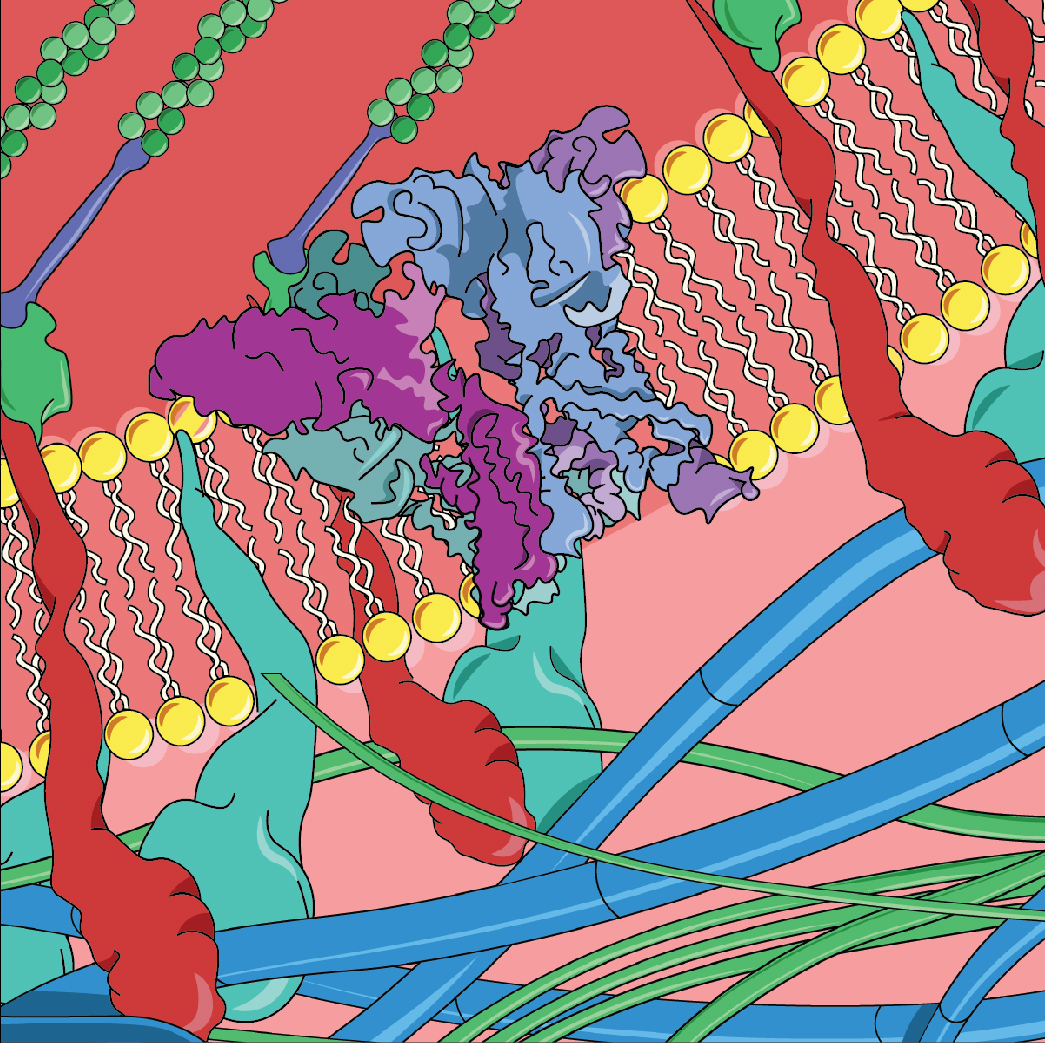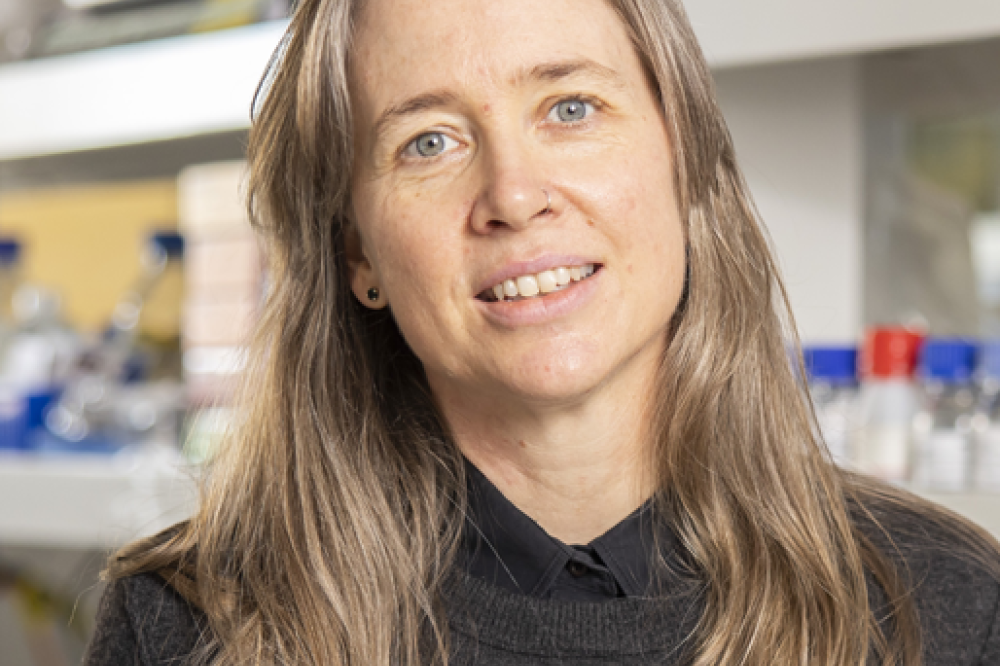image credit: Jess Richardson
Kate Poole wants to understand how cells sense touch. Molecular scale movements detected by sensory cells generate electrical signals translating into touch or pain. Exactly how this happens is still not clear. To monitor cellular responses to ultrafine movements, Kate grows cells on top of microscopic elastic cylinders—a setup she developed with colleagues in Germany. Kate discovered that protein complexes spanning the membrane—linking the inside of the cell with the extracellular matrix—control sensory signals. Electrical signals are generated in many cell types in response to mechanical stimuli. Being able to tune sensory signals provides a way to manage cartilage rebuilding, melanoma metastasis and other functions.
The sensing of and discrimination between different physical inputs is critical in the function of many cells and tissues in multicellular organisms; an acute response to mechanical stimuli underpins our senses of touch and hearing, integrated sensing of changing mechanical loads is fundamental for maintaining cartilage and the vasculature, and migratory cells (such as fibroblasts in wound healing or tumour cells during metastasis) can probe the mechanical properties of their surroundings by applying forces at cell-matrix contact points. Kate is studying the molecular mechanisms of cellular sensing of physical stimuli across a number of mammalian systems: in touch sensation in the somatic sensory system, the homeostatic maintenance of cartilage and in melanoma progression and metastasis.
Follow us on Twitter @Poolelab1
We are always looking for motivated students interested in mechanobiology and ion channels.
Please get in touch if you would like to work with us on projects related to these topics.
Email: k.poole@unsw.edu.au
Phone: +612 9065 2520
Researcher
Group Leader - Cellular Mechanotransduction
Related News
- We discovered a 'gentle touch' molecule is essential for light tactile sensation in humans - and perhaps in individual cells
- Unravelling the impacts of space travel
- UNSW researchers awarded more than $2.3m to build research infrastructure
- How do you feel? Your 'sense of touch' is several different senses rolled into one
- What does space travel do to your cells?

